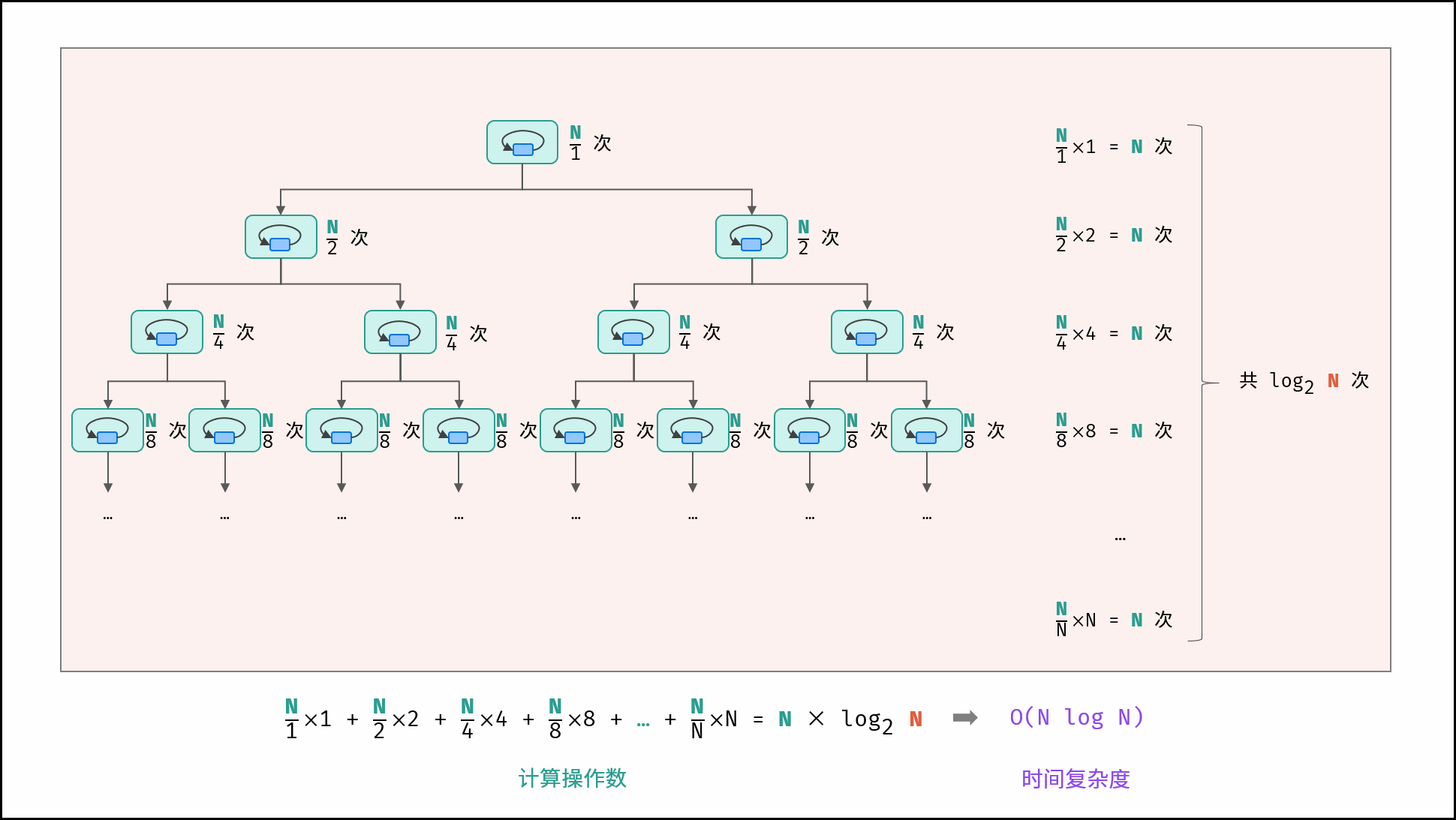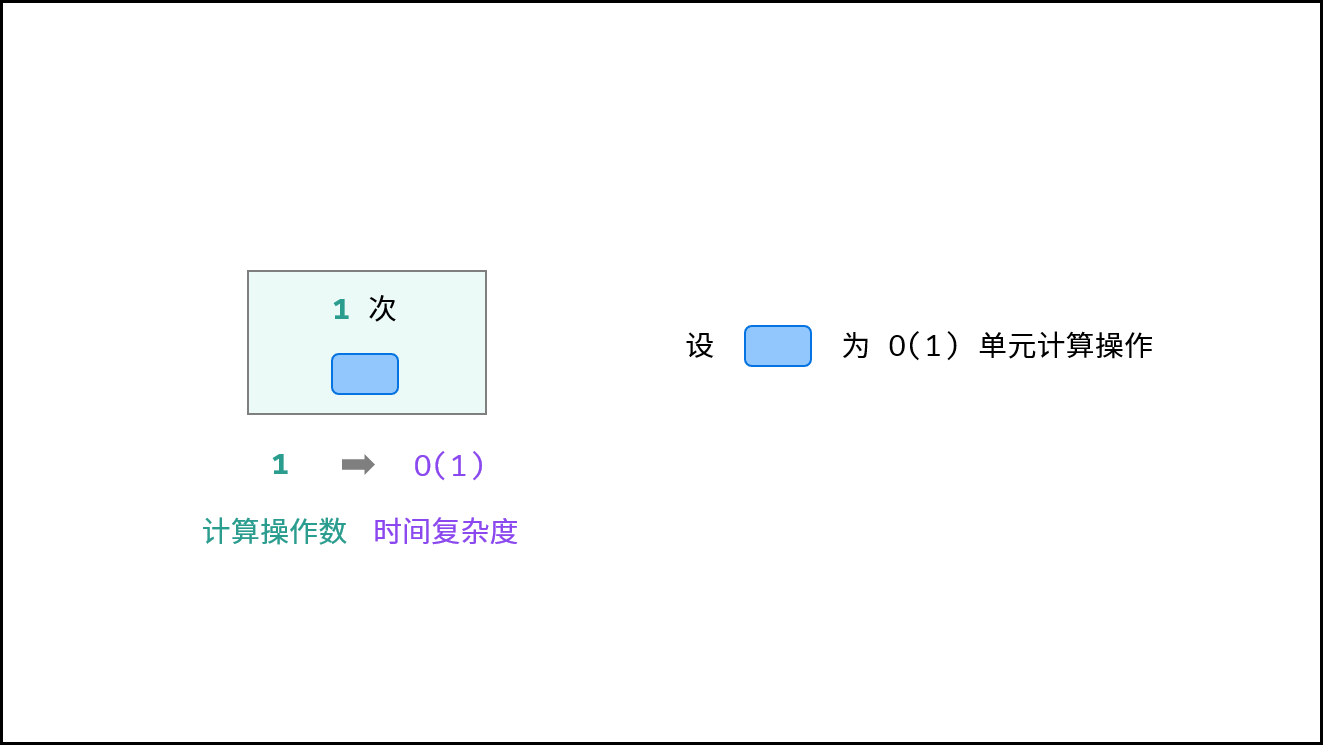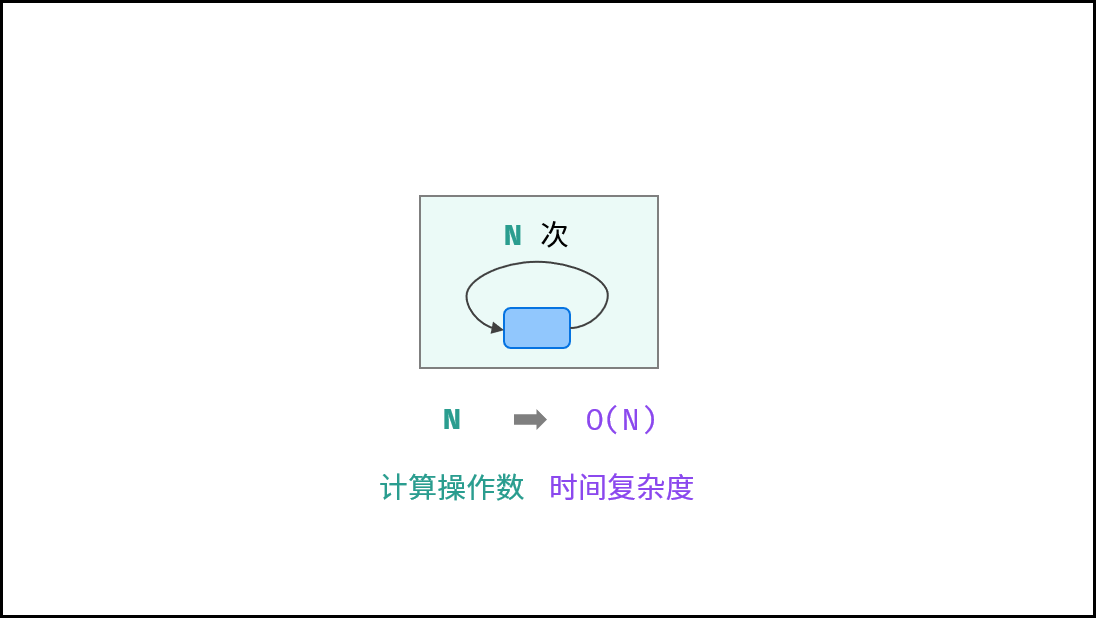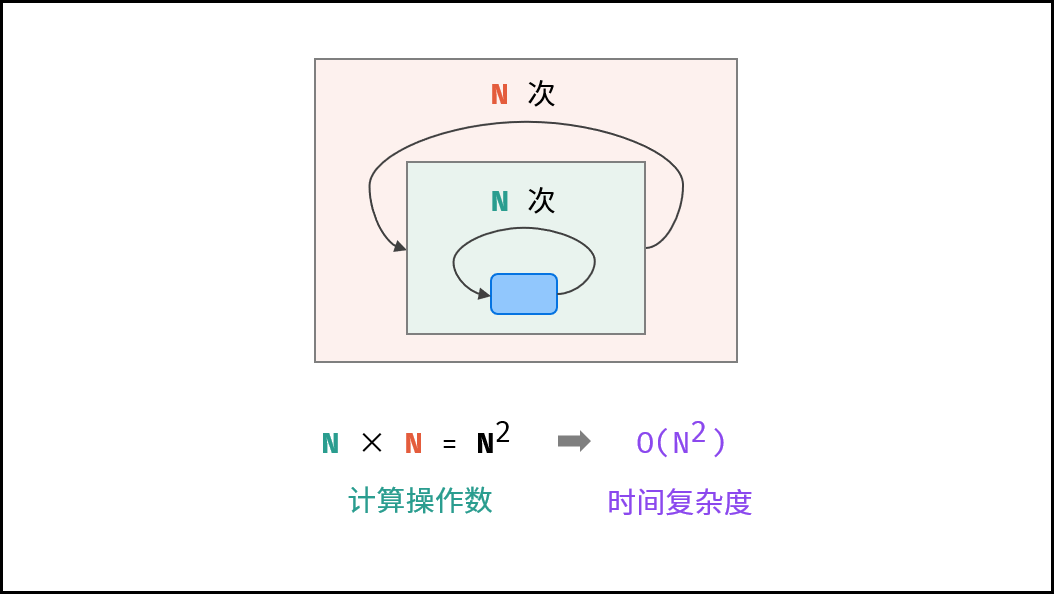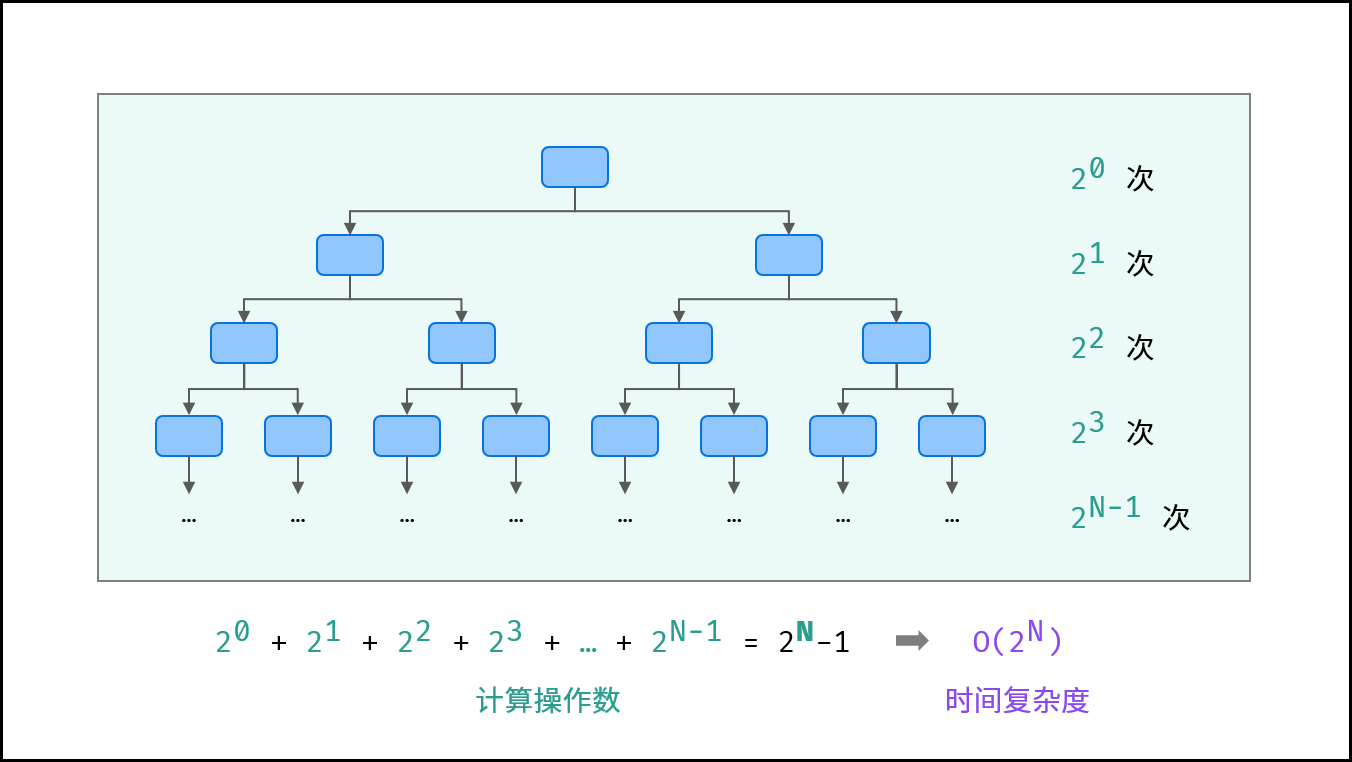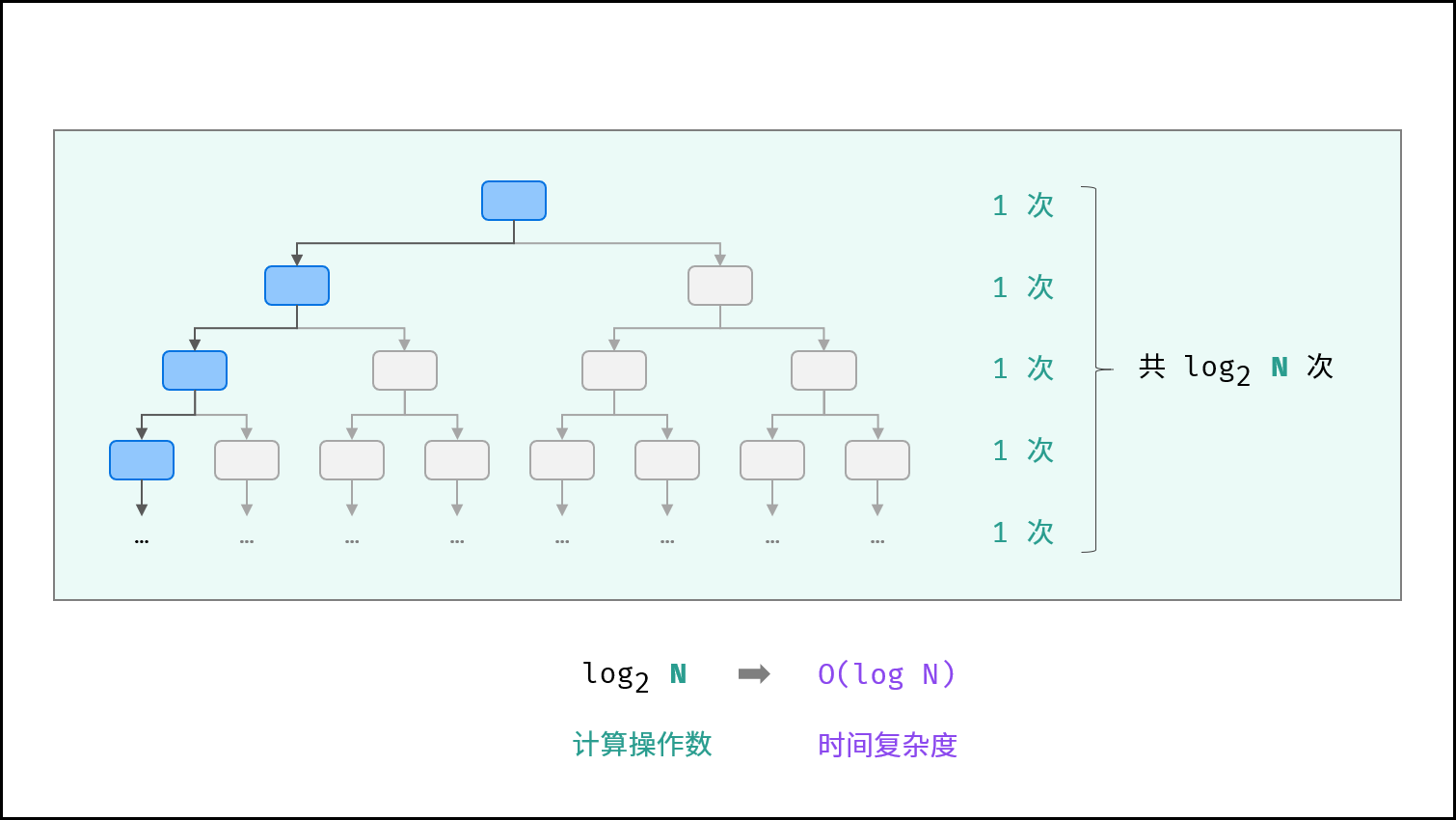时间复杂度
概念
指输入数据大小为N时,算法运行所需要的时间。
注意:
- 统计的是算法的【计算操作数量】,而不是【运行的绝对时间】;计算操作数量和运行绝对时间呈正相关关系,并不相等。算法运行时间受到(编程语言、计算机处理器速度、运行环境)等多种因素影响。
- 体现的是计算操作随数据N变化时的变化情况。
假设算法运行时总共需要1次操作、100次操作,此两种情况的时间复杂度都为常数级O(1);需要N次操作、100N次操作的时间复杂度都为O(N)
符号表示
最差 —— O
- 平均 —— Θ
- 最佳 —— Ω
示例:
boolean findSeven(int[] nums){for (int num : nums){if (num == 7){return true;}}return false;}
- 最佳情况Ω(1):nums[7,a,s,d,f…],即当数组首个数字为7时,无论nums有多少元素,循环次数都为1。
- 最差情况O(N):nums[a,s,c,f,f…]且nums中所有数字都不为7时,此时会遍历整个数组,循环N次。
- 平均情况Θ:需要考虑输入数据的分布情况,计算所有数据情况下的平均时间复杂度。
- 本题目需要考虑数组长度、数组元素的取值范围等。
常见种类
从小到大:
O(1) < O(logN) < O(N) < O(N log N) < O(N2) < O(2N) < O(N!)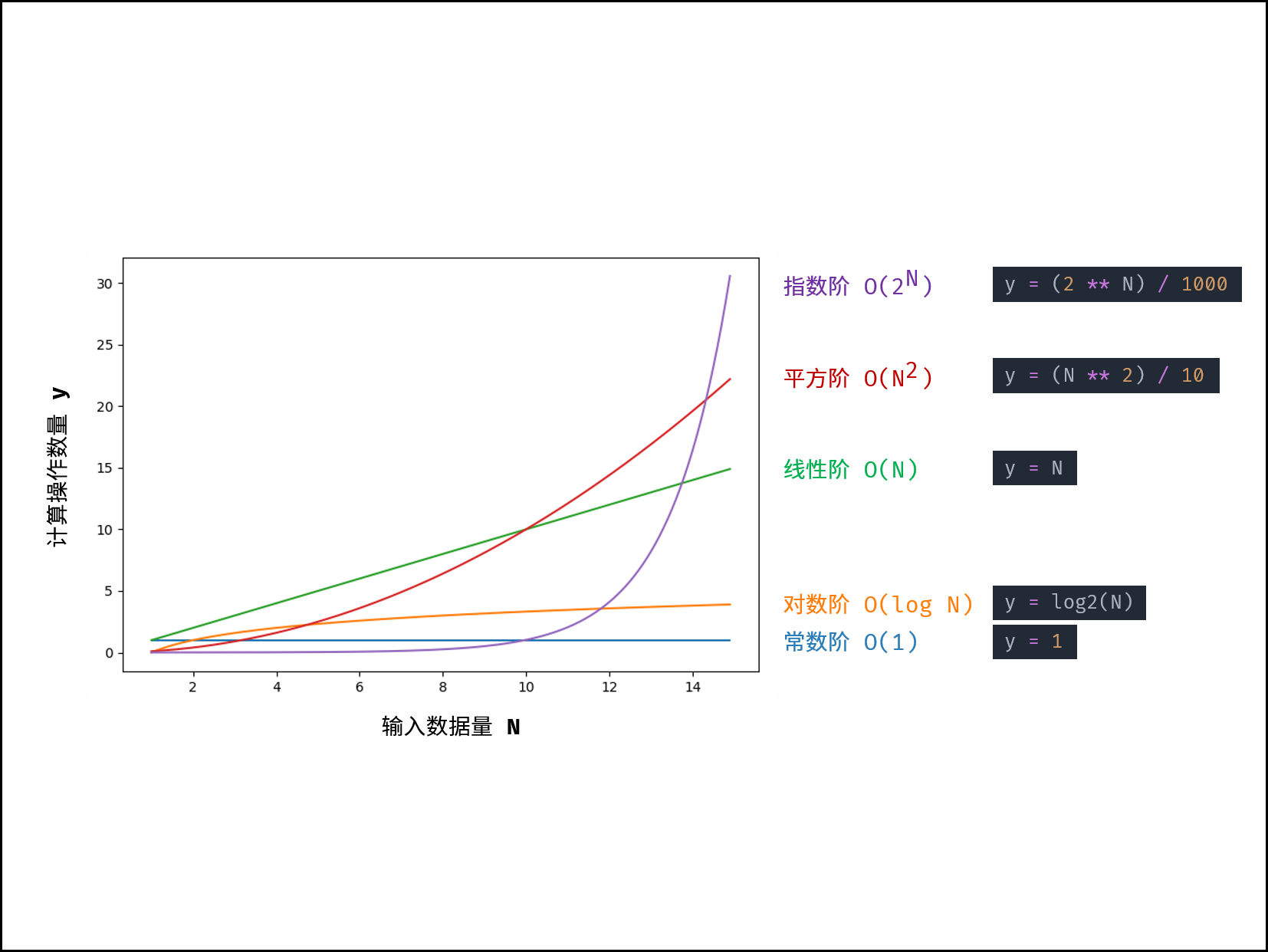
示例解析
常数O(1)
运行次数与N大小呈常数关系,即不随输入数据大小N的变化而变化。
int algorithm(int N) {int a = 1;int b = 2;int x = a * b + N;return 1;}int algorithm(int N) {int count = 0;int a = 10000;for (int i = 0; i < a; i++) {count++;}return count;}
线型O(N)
循环运行次数与N大小呈线型关系,时间复杂度为O(N)
示例:
int algorithm(int N){int count = 0;for (int i = 0; i < N; i++){count++;}return count;}//以下代码虽然是两层循环,但是第二层与N的大小无关,因此整体仍与N呈线型关系int algorithm(int N){int count = 0;int a = 10000;for (int i = 0; i < N; i++){for (int j = 0; j < a; j++){count++;}}return count;}
平方O(N2)
两层循环相互独立,都与N呈线型关系,因此总体与N呈平方关系,时间复杂度为O(N2)。
示例:
int algorithm(int N){int count = 0;for (int i = 0; i < N; i++){for (int j = 0; j < N; j++){count++;}}return count;}
以【冒泡排序】为例,其包含两层独立循环:
- 第一次复杂度为O(N)
- 第二层平均循环次数为N/2,复杂度为O(N)
- 推导过程如下:
- O(N/2) = O(1/2)O(N) = O(1)O(N) = O(N)
因此,冒泡排序的总体时间复杂度为O(N2),代码示例:
int[] bubbleSort(int[] nums){int N = nums.length;for (int i = 0; i < N-1; i++){for (int j = 0; j < N-1-i; j++){if (nums[j] > nums[j+1]){int tmp = nums[j];nums[j] = nums[j+1];num[j+1] = tmp;}}}return nums;}
指数O(2N)
生物学科中的“细胞分裂”即是指数级增长。初始状态为1个细胞,分裂一轮后为2个,分裂两轮后为4个,……,分裂N轮后有2N个细胞。
代码示例:
int algorithm(int N){if (N <= 0){return 1;}int count_1 = algorithm(N-1);int count_2 = algorithm(N-1);return count_1 + count_2;}
阶乘O(N!)
阶乘阶对应数学上常见的“全排列”。即给定N个互不重复的元素,求其所有可能的排列方案:
N (N - 1) (N - 2) …… 2 * 1 = N!
阶乘通常使用递归实现,算法原理:
第一层分裂出N个,第二层分裂出N-1个,……直到第N层终止并回溯;
int algorithm(int N) {if (N <= 0) {return 1;}int count = 0;for (int i = 0; i < N; i++) {count += algorithm(N - 1);}return count;}
对数O(log N)
对数阶与指数阶相反,指数阶为“每轮分裂出两倍的情况”,而对数阶是“每轮排除一半的情况”。
对数阶常出现于【二分法】、【分治】算法,体现着:一分为二和一分为多的算法思想。
示例:
设置循环次数为m,则输入数据大小N与2m呈线型关系,两边同时取log2对数,则得到循环次数m与log2N呈线性关系,即时间复杂度为O(logN)
int algorithm(int N){int count = 0;folat = N;while (i > 1){i = i / 2;count ++;}return count;}
线性对数O(N log N)
概念:
两层循环相互独立,第一层和第二层时间复杂度分别为O(log N)和O(N),则总体时间复杂度为O(N log N)。
int algorithm(int N) {int count = 0;float i = N;while (i > 1){i = i / 2;for (int j = 0; j < N; j++){count ++;}}return count;}
线型对数阶常出现于排序算法,例:快速排序、归并排序、堆排序等。
时间复杂度原理图: